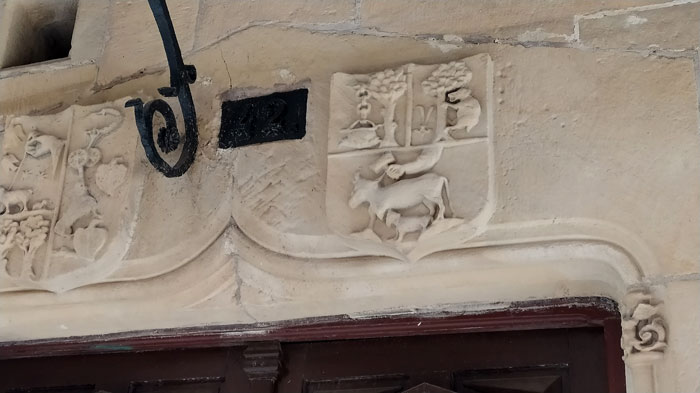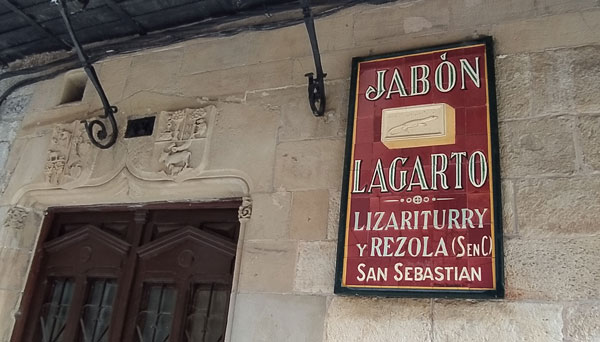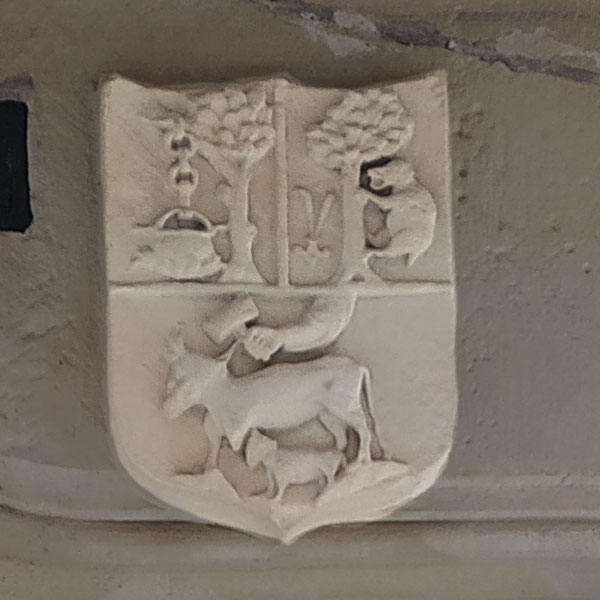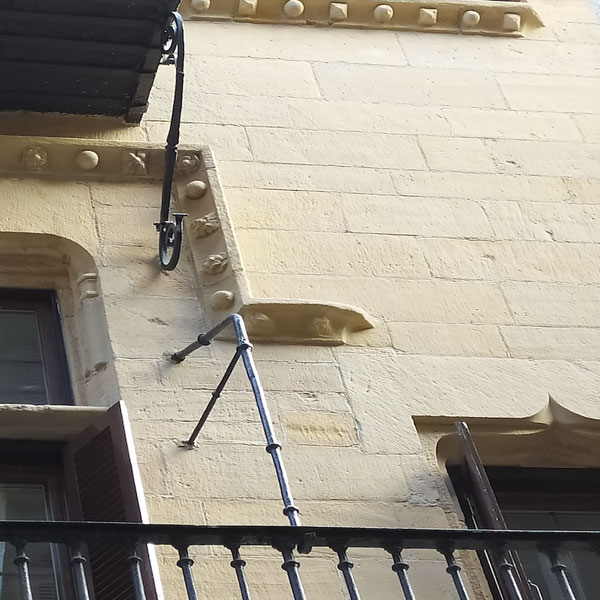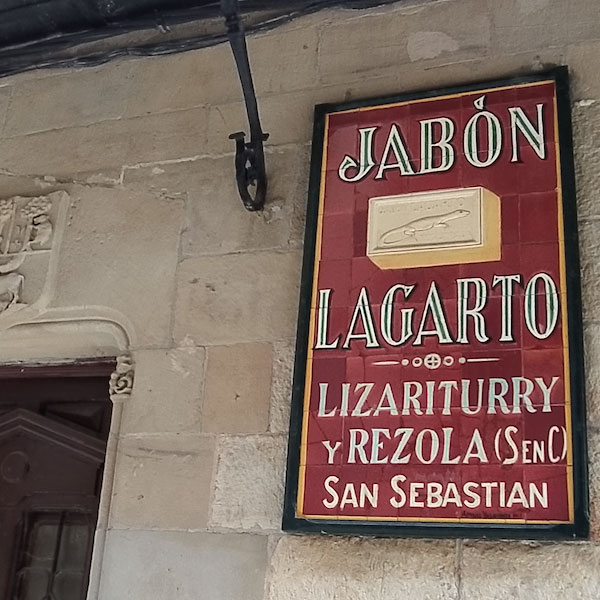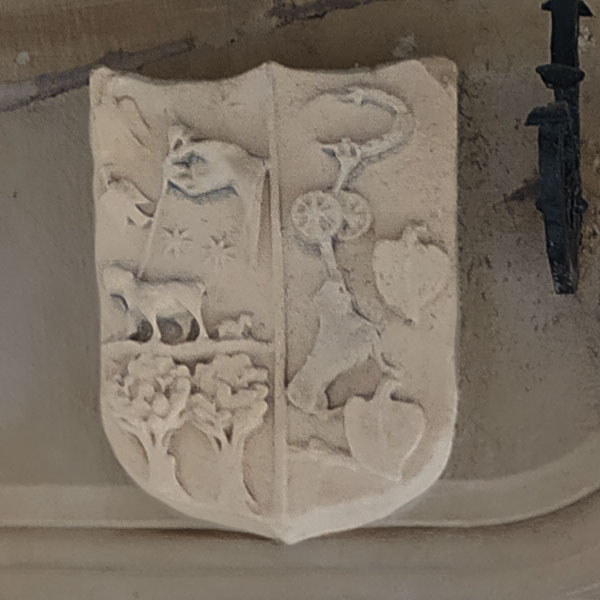How to get
3. Beroitz etxea
Beroitz etxea
High society
The Beroitz house is a beautifully simple building with an aristocratic touch and elegant Renaissance, late Gothic and Baroque decorative elements. The wrought-iron balcony, the carved wooden eaves and the cornices decorated with balls, roses and diamond points are particularly remarkable. Windows and doors are topped with ogee arches. The top floor was added later, in 1912, and was designed by Ramón Cendoya.
Various sources date the building to between the end of the 16th century and the beginning of the 17th century. The small coats of arms above the main entrance give us clues as to who may have lived there. The coat of arms on the right clearly shows the coats of arms of three of the most important families of medieval Hernani: Alcega, Amezqueta and Yarza. Families of the Basque rural nobility who joined forces through marriage.
Baroque society was strongly hierarchical. Each person had to act in accordance with the social group to which he or she belonged. The situation for women was especially peculiar. There were four “models” of women: maiden, married, nun and widow. All of them lived under strong social conventions. The maiden had to “maintain her virtue”, to “safeguard the good name of the family”. The married woman had to “take care of her husband and children”, she could not have any other occupation. The nuns lived under strict ecclesiastical law. Lastly, widows had a different status: in a way, they were respected as guarantors of the family’s heritage. They were allowed to work or run a business; they were even allowed to increase their assets.
The headdresses or “burukoak” were a hallmark of Basque women during the late Middle Ages, until the church banned them in the s. XVII.
According to size and shape, lineage, social class or origin could be distinguished.
The highlight of this building is the striking “Jabón Lagarto” notice board from the early 20th century. Lagarto is a company founded by the Lizariturry and Rezola families (Donostia, 1860), whose best-known product is Lagarto soap (1914). The origin of the name can be traced back to the fear that the huge and noisy machinery of the manufacturing plant caused among the workers, who, when they saw it, would say aloud: “LAGARTO, LAGARTO” (LIZARD, LIZARD).
Links of interest:
La historia ignorada.
Una visión sobre el papel de las mujeres en la vida pública de Hernani:

